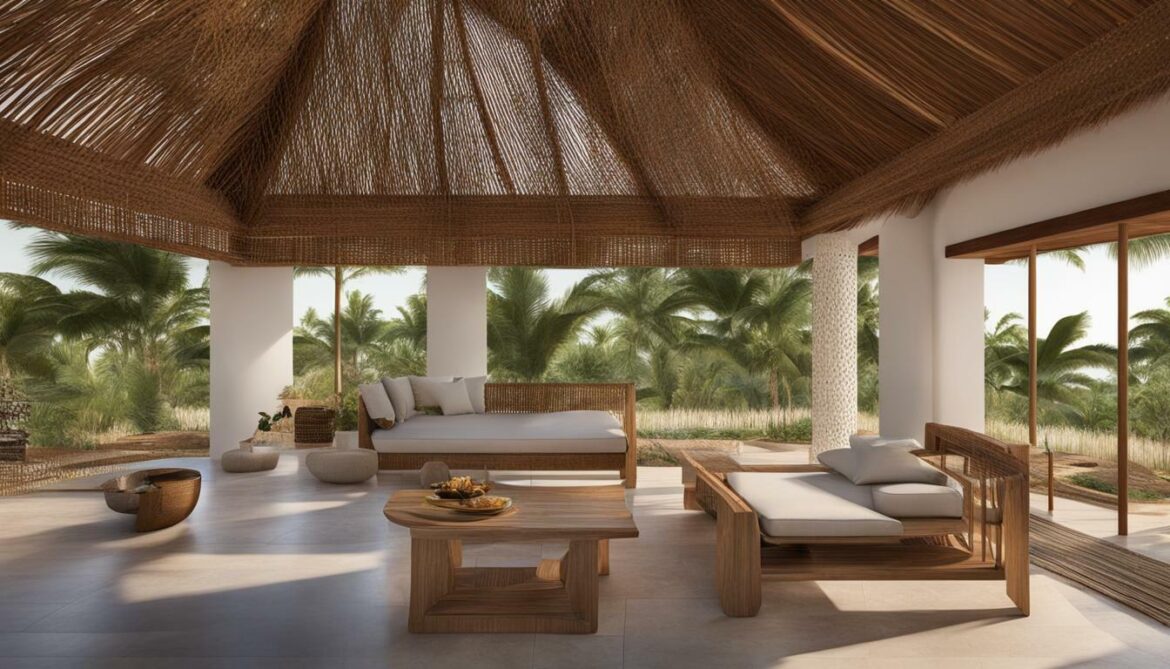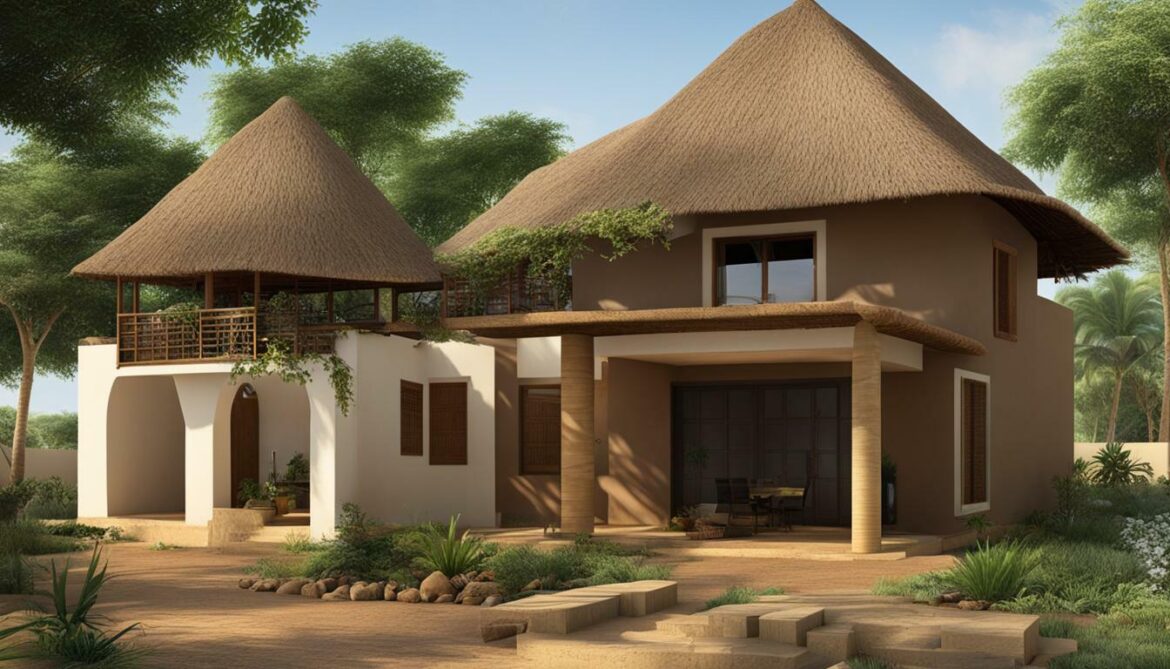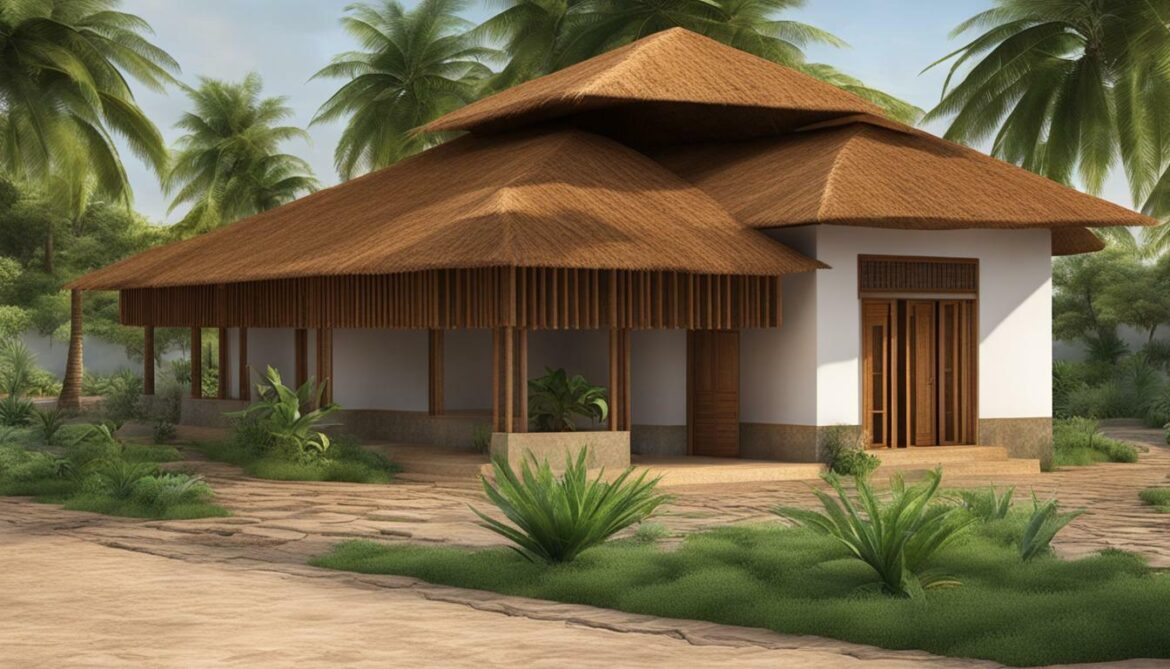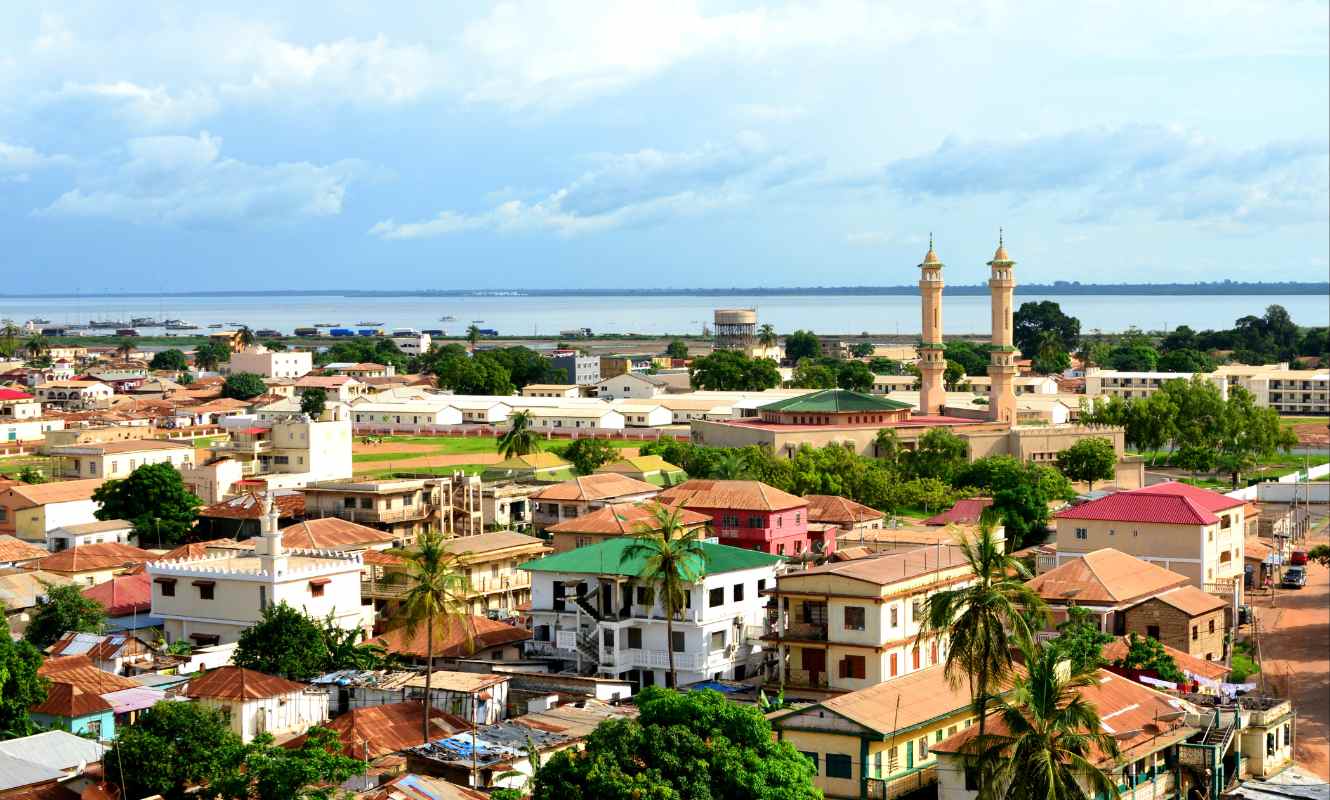The history of green building in Gambia showcases the country’s commitment to sustainable construction practices and eco-friendly architecture. Over the years, Gambia has embraced the principles of sustainable development and has made significant strides in promoting green building practices. From the use of local materials to the integration of traditional techniques with innovative approaches, Gambia has been at the forefront of sustainable construction in the region.
- Gambia has a rich history of green building practices, emphasizing sustainability and eco-friendly architecture.
- The Build with Gambia Earth Architecture Workshop in 2018 played a significant role in promoting sustainable construction in the country.
- The workshop explored various building techniques using local materials, such as earth, and involved local workers and international volunteers.
- Gambia has successfully integrated traditional techniques with innovative approaches in its green building initiatives.
- The positive impact of green building practices can be seen in the community, with local builders adopting sustainable construction methods and the replication of block press by the local blacksmith.
As Gambia continues to prioritize sustainability and environmental conservation, the future outlook for green building initiatives in the country remains promising. By preserving local traditions and embracing innovative solutions, Gambia is paving the way for a greener and more sustainable future.
Sustainable Construction in Gambia
In Gambia, sustainable construction practices and eco-friendly architecture have gained traction, with a focus on using locally sourced materials and implementing sustainable design principles. The country’s commitment to sustainability is reflected in its use of natural resources and integration of traditional building techniques with innovative approaches.
One notable example of sustainable construction in Gambia is the Build with Gambia Earth Architecture Workshop, which took place in the village of Karsi Kunda in 2018. During the workshop, various building techniques using local materials, particularly earth, were explored. Participants experimented with rammed earth, adobe bricks, the Nubian vault, lime plaster, and stone foundations. These techniques were chosen due to the remoteness of the village and the high cost of industrial materials.
| Building Techniques Explored: |
Materials Used: |
| Rammed Earth |
Locally sourced soil and clay mixtures |
| Adobe Bricks |
Clay, sand, straw, and water |
| Nubian Vault |
Local bricks or stones with mud mortar |
| Lime Plaster |
Locally sourced limestone and sand |
| Stone Foundations |
Local stones and gravel |
The design of a dormitory for a rural vocational school was developed on-site, taking into consideration the local context and the input of local workers and international volunteers. The workshop also involved experiments with recycling glass bottles to create glass bricks and using crushed and whole seashells in the plaster for better waterproofing. While rammed earth was initially chosen as the main technique, it was eventually replaced with adobe bricks, which were more familiar to the locals and suited the local context. The construction also included the building of a Nubian vault for the roof, inspired by the work of the Nubian Vault Association in Burkina Faso.
The impact of these sustainable construction practices on the community has been significant. Local builders have adopted the use of pressed earth blocks, and the local blacksmith has even replicated the block press to meet the growing demand. The commitment to sustainability and the integration of traditional techniques with innovative approaches have paved the way for a future of eco-friendly architecture and sustainable development in Gambia.
Key Takeaways:
- Gambia has embraced sustainable construction practices and eco-friendly architecture.
- Local materials such as earth are utilized to build using techniques like rammed earth, adobe bricks, and Nubian vaults.
- The integration of traditional techniques with innovative approaches is key to sustainable development in Gambia.
- These practices have had a positive impact on the community, with local builders adopting sustainable construction methods.

The table above provides an overview of the building techniques explored during the Build with Gambia Earth Architecture Workshop, along with the materials used for each technique. These techniques showcase the use of locally sourced materials and sustainable design principles in Gambia’s construction practices.
The combination of sustainable construction practices, eco-friendly architecture, and the integration of traditional techniques with innovative approaches have positioned Gambia as a leader in sustainable development. The commitment to using locally sourced materials not only reduces costs but also helps preserve the environment and promote community involvement.
With the adoption of these sustainable practices, Gambia is building a brighter and greener future. Local builders are embracing these techniques, and the replication of the block press by the local blacksmith demonstrates the community’s enthusiasm for sustainable construction. Gambia’s green building initiatives are driving positive change and setting an example for sustainable development worldwide.
The Build with Gambia Earth Architecture Workshop
One significant event in Gambia’s green building history was the Build with Gambia Earth Architecture Workshop, which took place in 2018, aimed at sharing knowledge and experimenting with sustainable construction techniques. The workshop was held in the village of Karsi Kunda and focused on utilizing local materials, particularly earth, to create eco-friendly buildings. Local workers and international volunteers came together to explore various building techniques, including rammed earth, adobe bricks, the Nubian vault, lime plaster, and stone foundations.
During the workshop, a dormitory design for a rural vocational school was developed on-site, taking into consideration the unique context of the village. The use of local materials and techniques was essential due to the village’s remote location and the high cost of industrial materials. To maximize sustainability, the workshop also experimented with recycling glass bottles to create glass bricks and using crushed and whole seashells in the plaster for better waterproofing.
The construction initially began with rammed earth, but it proved to be challenging. As a result, the technique was replaced with adobe bricks, which were more familiar to the locals and better suited for the local context. Additionally, a Nubian vault, inspired by the work of the Nubian Vault Association in Burkina Faso, was built for the roof. The aim of the project was to create sustainable and ecological buildings rooted in local housing traditions, using passive solutions and natural materials.
This earth architecture workshop has had a significant impact on the community, with local builders adopting the use of pressed earth blocks in their construction practices. The success of the workshop also led to the local blacksmith replicating the block press to meet the increasing demand. The integration of traditional techniques with innovative approaches has not only improved sustainable construction practices but also promoted environmental conservation in Gambia. The history of green building in Gambia showcases a commitment to sustainability by utilizing local resources and valuing community involvement.

| Techniques Explored |
Materials |
| Rammed Earth |
Local soil, sand, and gravel |
| Adobe Bricks |
Clay, sand, and straw |
| Nubian Vault |
Mud bricks and wooden scaffolding |
| Lime Plaster |
Lime, sand, and water |
| Stone Foundations |
Local stones |
Integration of Traditional Techniques with Innovative Approaches
Gambia’s green building practices have successfully merged traditional techniques with innovative approaches, ensuring sustainable development and the utilization of renewable energy sources. The Build with Gambia Earth Architecture Workshop, held in the remote village of Karsi Kunda in 2018, exemplifies this commitment to combining local traditions with eco-friendly solutions.
During the workshop, various building techniques were explored, with an emphasis on using locally available materials. From rammed earth to adobe bricks, the participants experimented with different methods, aiming to create sustainable and ecological buildings rooted in the local housing traditions.
| Technique |
Advantages |
| Rammed Earth |
Durable and thermal insulating |
| Adobe Bricks |
Familiar to locals and suitable for the local context |
| Nubian Vault |
Inspired by the work of the Nubian Vault Association in Burkina Faso |
In addition to using local techniques, the workshop also incorporated innovative ideas such as recycling glass bottles to create glass bricks and utilizing crushed and whole seashells in plaster for improved waterproofing. These creative solutions showcased the potential for sustainable construction practices that minimize the environmental impact.
The impact of the Build with Gambia Earth Architecture Workshop has been significant in the local community. Local builders have embraced the use of pressed earth blocks, providing a sustainable and cost-effective alternative to traditional construction methods. Furthermore, the local blacksmith has replicated the block press to meet the increasing demand, demonstrating the long-term viability and positive ripple effect of the workshop.

The integration of traditional building techniques with innovative approaches in Gambia’s green building practices has not only showcased the importance of preserving local traditions but has also paved the way for sustainable development and the utilization of renewable energy sources. By utilizing locally available materials and engaging the community, Gambia has established itself as a leader in green building initiatives. The success of the Build with Gambia Earth Architecture Workshop serves as a testament to the power of collaboration, knowledge sharing, and the blending of traditional wisdom with modern solutions.
Impact on the Community and Future Outlook
The incorporation of green building practices in Gambia has had a significant impact on the community, with local builders embracing sustainable construction methods and paving the way for future green building initiatives. The Build with Gambia Earth Architecture Workshop, held in Karsi Kunda in 2018, played a crucial role in introducing these practices and fostering a sense of environmental consciousness among the locals.
Since the workshop, there has been a noticeable shift towards the use of sustainable materials and techniques in construction projects throughout the country. Local builders have adopted the practice of using pressed earth blocks, which are not only cost-effective but also help reduce carbon emissions. This has led to a decrease in the demand for industrial materials and a greater reliance on locally available resources.
Furthermore, the success of the workshop sparked interest among other communities in Gambia, inspiring them to explore and implement green building initiatives. This has resulted in a proliferation of sustainable construction projects, ranging from eco-friendly homes to innovative community spaces. These projects not only contribute to the preservation of the environment but also enhance the overall well-being of the communities they serve.
Looking ahead, the future of green building in Gambia appears promising. The momentum generated by the workshop continues to drive the adoption of sustainable practices and the development of eco-friendly infrastructure. With increased awareness and support from both the government and international organizations, Gambia is poised to become a leader in sustainable construction in the region, setting an example for other countries to follow.
| Benefits of Green Building in Gambia |
Future Outlook |
- Reduced carbon emissions
- Cost-effective construction
- Preservation of natural resources
- Enhanced community well-being
|
- Continued growth of sustainable construction
- Increased government support
- Collaboration with international organizations
- Expansion of eco-friendly infrastructure
|
“The incorporation of sustainable building practices in Gambia has not only transformed the construction industry but also empowered local communities to make a positive impact on the environment. By embracing eco-friendly materials and techniques, Gambia is paving the way for a greener future.”

As the demand for sustainable and energy-efficient buildings continues to rise, Gambia is well-positioned to meet these challenges head-on. Embracing a holistic approach that integrates traditional techniques with innovative solutions, Gambia can build a future that is both environmentally conscious and socially inclusive. By nurturing the local capacity and engaging communities, green building initiatives in Gambia are poised to shape a sustainable and resilient future for generations to come.
Conclusion
The history of green building in Gambia showcases the country’s commitment to sustainability, with a harmonious blend of traditional techniques and innovative approaches, providing eco-friendly solutions for sustainable construction and a brighter future.
The Build with Gambia Earth Architecture Workshop, held in the village of Karsi Kunda in 2018, played a pivotal role in this journey. The workshop brought together local workers and international volunteers to explore different building techniques using local materials, such as earth. Techniques like rammed earth, adobe bricks, and the Nubian vault were experimented with, taking into consideration the local context and the need for cost-effective solutions due to the village’s remoteness.
During the workshop, the construction of a dormitory for a rural vocational school was developed on-site. This included the use of recycled glass bottles to create glass bricks, crushed and whole seashells in the plaster for enhanced waterproofing, and the building of a Nubian vault for the roof. These sustainable and ecological buildings were rooted in local housing traditions and incorporated passive solutions and local natural materials.
The impact of these green building practices has been significant, with local builders now adopting the use of pressed earth blocks and the local blacksmith replicating the block press to meet increasing demand. This not only promotes sustainable construction but also empowers the local community by providing employment opportunities and a sense of pride in their traditional building techniques.
Overall, the history of green building in Gambia demonstrates the successful integration of sustainable practices with respect for the environment and local culture. As the country continues to prioritize sustainability and eco-friendly solutions, it is paving the way for a greener and more resilient future.
FAQ
What is the history of green building in Gambia?
The history of green building in Gambia can be traced back to the Build with Gambia Earth Architecture Workshop in 2018, which aimed to share knowledge and experiment with different ways of building using local materials.
What techniques were explored during the Build with Gambia Earth Architecture Workshop?
Techniques such as rammed earth, adobe bricks, the Nubian vault, lime plaster, and stone foundations were explored during the workshop.
How was the design of the dormitory for the vocational school developed?
The design of the dormitory was developed on-site, taking into consideration the local context and the input of both local workers and international volunteers.
Why was the use of local materials and techniques crucial?
The use of local materials and techniques was crucial due to the remoteness of the village and the high cost of industrial materials.
What experiments were conducted during the workshop?
The workshop involved experiments with recycling glass bottles to create glass bricks and using crushed and whole seashells in the plaster for better waterproofing.
What were the main building techniques used in the construction project?
Initially, rammed earth was chosen as the main technique, but it was eventually replaced with adobe bricks, which were more familiar to the locals and more suitable for the local context. The construction also included the building of a Nubian vault for the roof.
What was the aim of the project?
The aim of the project was to create sustainable and ecological buildings rooted in local housing traditions and using passive solutions and local natural materials.
What impact did the project have on the community?
The project had a positive impact on the community, with local builders adopting the use of pressed earth blocks and the local blacksmith replicating the block press to meet the increasing demand.
What is the future outlook for green building initiatives in Gambia?
The future outlook for green building initiatives in Gambia is promising, with a growing focus on sustainable construction methods and the integration of traditional techniques with innovative approaches.
Source Links






















Post comments (0)